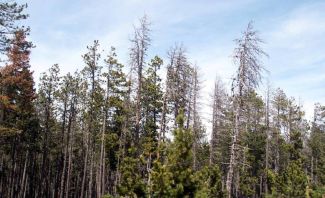Elemental factors and ecology

Organisms are the product of chemical reactions, and their growth depends on the availability of various elements, especially carbon (C), nitrogen (N) and phosphorus (P). Stoichiometry studies of the main bioelements of the organisms and the environment (water and soil) have provided evidences relating the changes in elemental stoichiometry to the changes in the species growth and the species community composition. In this way, it has emerged the "growth rate hypothesis" (GRH) claiming that the fast growing species need higher concentrations of ribosomal RNA (rRNA), molecules very rich in phosphorus, in order to reach larger protein synthesis and thus fast growth. Consequently, the environmental conditions that induce organic matter production with low N:P ratio would have, as a consequence, a low protein:rRNA ratio and thus higher growth rates, more efficient material transfer through food webs, and increased biomass of large bodied animals relative to that of small body animals.
GRH has been proved in aquatic ecosystems (especially in zooplankton studies), but until now, the studies in terrestrial ecosystems are scarce and the results obtained are not conclusive. Studies conducted with terrestrial plants have found that the faster-growing plants had lower protein:sRNA ratios but not consistently lower N:P ratios. The set of experimental results reported until now seems insufficient to confirm these relationships. Several other aspects are to be considered. For example, in plants the N:P ratio, differently that zooplankton, are not only related to primary metabolism but also to secondary metabolism and to the capacity of metabolite storage.
Therefore, future studies focused on the links between elemental stoichiometry and ecosystem properties through molecular changes would have to take into account other molecule types in addition to proteins and rRNA. The differences in elemental composition must be linked to differences in the molecular composition, since the elements are basically present in organism forming molecules. To reach a solid ecological stoichiometry theory is essential to establish the mechanisms that explain why the elemental stoichiometrical changes can provoke changes at ecosystem level. In this way it is crucial the knowledge of the different steps in this process such as the changes in the molecular composition of organisms.
This challenge begins to be now possible to be approached with metabolomic techniques, which allow analyze the metabolome (the whole set of metabolites present in the organism at a determined time). Preliminary metabolomic techniques applied in ecological studies have already been conducted(1). These studies and those that now are beginning to be more widely conducted, will allow to link elemental stoichiometry changes with metabolic changes, and the latter ones with the ecological changes(2). Metabolomic studies will help us to interpret the changes in source allocation to growth, reproduction, defense, storage and catabolism in different taxonomical groups, and to relate them with the stoichiometry changes of the main bioelements. Furthermore, these studies will be conducted in natural gradients from high to low productivity and thus will allow testing the GRH. All together will improve the knowledge of how the organisms growth rates and the specific ecosystem composition depend on C:N:P stoichiometry, thus allowing a chemical approach of ecology and evolution.
(1) Peñuelas J., Sardans J. 2009. Ecological metabolomics. Chemistry and Ecology 25: 305-309.
(2) Peñuelas J., Sardans J. 2009. Elementary factors. Nature 460: 803-804.
References
"Elementary factors". Peñuelas, J.; Sardans, J. Nature 460, 803-804, 13 August 2009.


